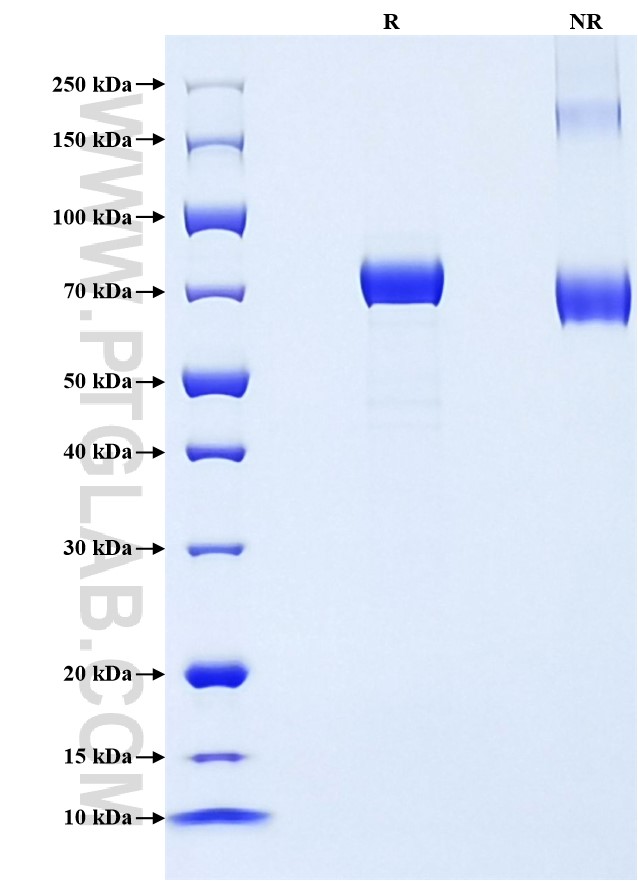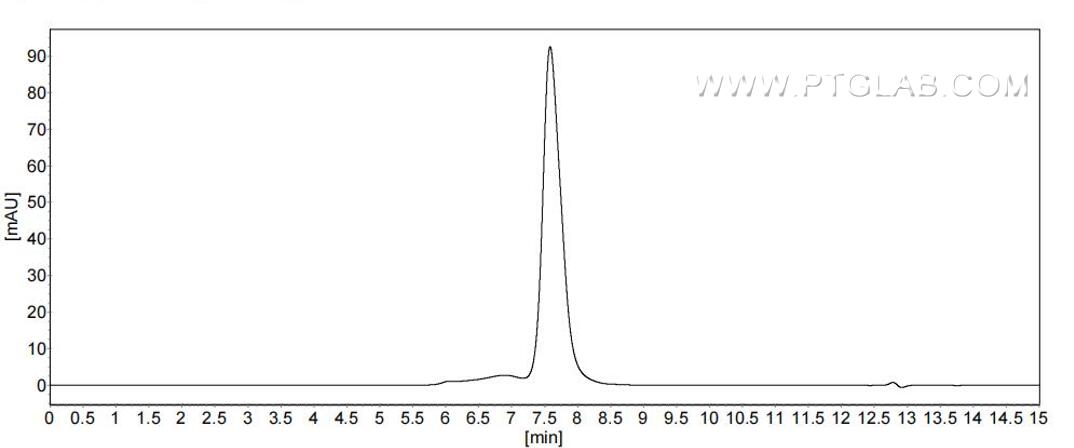Recombinant Mouse IL-13RA2 protein (rFc Tag) (HPLC verified)
种属
Mouse
纯度
>90 %, SDS-PAGE
>90 %, SEC-HPLC
标签
rFc Tag
生物活性
未测试
验证数据展示
产品信息
| 纯度 | >90 %, SDS-PAGE >90 %, SEC-HPLC |
| 内毒素 | <0.1 EU/μg protein, LAL method |
| 生物活性 |
Not tested |
| 来源 | HEK293-derived Mouse IL-13RA2 protein Leu22-Lys334 (Accession# O88786-1) with a rabbit IgG Fc tag at the C-terminus. |
| 基因ID | 16165 |
| 蛋白编号 | O88786-1 |
| 预测分子量 | 62.5 kDa |
| SDS-PAGE | 68-80 kDa, reducing (R) conditions |
| 组分 | Lyophilized from 0.22 μm filtered solution in PBS, pH 7.4. Normally 5% trehalose and 5% mannitol are added as protectants before lyophilization. |
| 复溶 | Briefly centrifuge the tube before opening. Reconstitute at 0.1-0.5 mg/mL in sterile water. |
| 储存条件 |
It is recommended that the protein be aliquoted for optimal storage. Avoid repeated freeze-thaw cycles.
|
| 运输条件 | The product is shipped at ambient temperature. Upon receipt, store it immediately at the recommended temperature. |
背景信息
The protein encoded by the Il13ra2 gene is closely related to Il13ra1, a subunit of the interleukin 13 receptor complex. This protein binds IL13 with high affinity but lacks a cytoplasmic domain and does not function as a signal mediator. It is reported to play a role in the internalization of IL13. It acts as a decoy receptor for IL-13, diminishing its STAT6-mediated effector functions. It has been implicated in the pathogenesis of inflammatory bowel disease (IBD). Mouse models have been used to study the function of Il13ra2 in IBD, and its human ortholog IL13RA2 is a promising candidate for the development of therapeutic strategies for IBD.
参考文献:
1. Seblani M, Zannikou M, et al. (2024) Res Sq. rs.3.rs-5398280. 2. Zhang T, Zhu M, et al. (2024) J Adv Res. S2090-1232(24)00082-1. 3. Marquardt RM, Lee K, et al. (2020) Biol Reprod. 103(4):760-768. 4. Saka M, Amano T, et al. (2010) J Neurosurg. 113(2):270-9.

